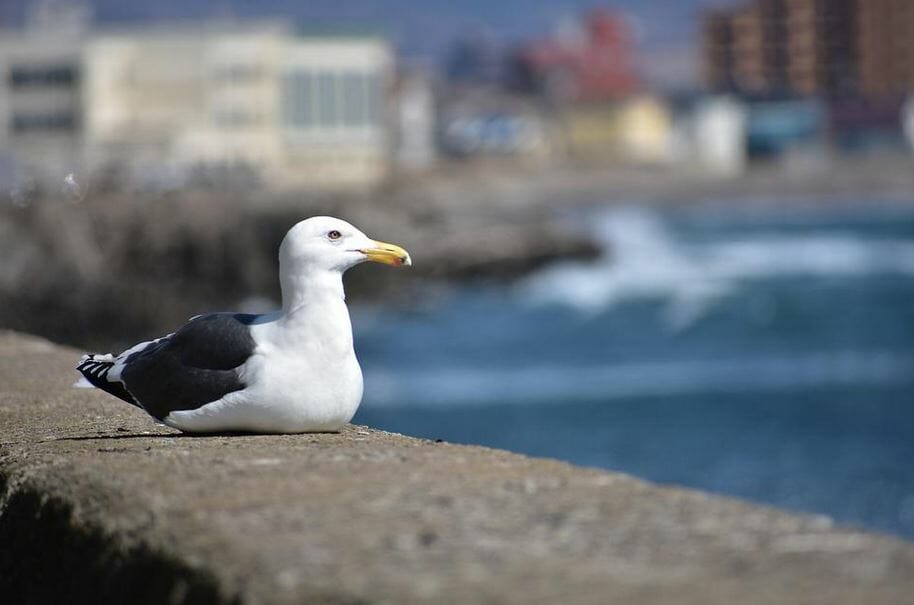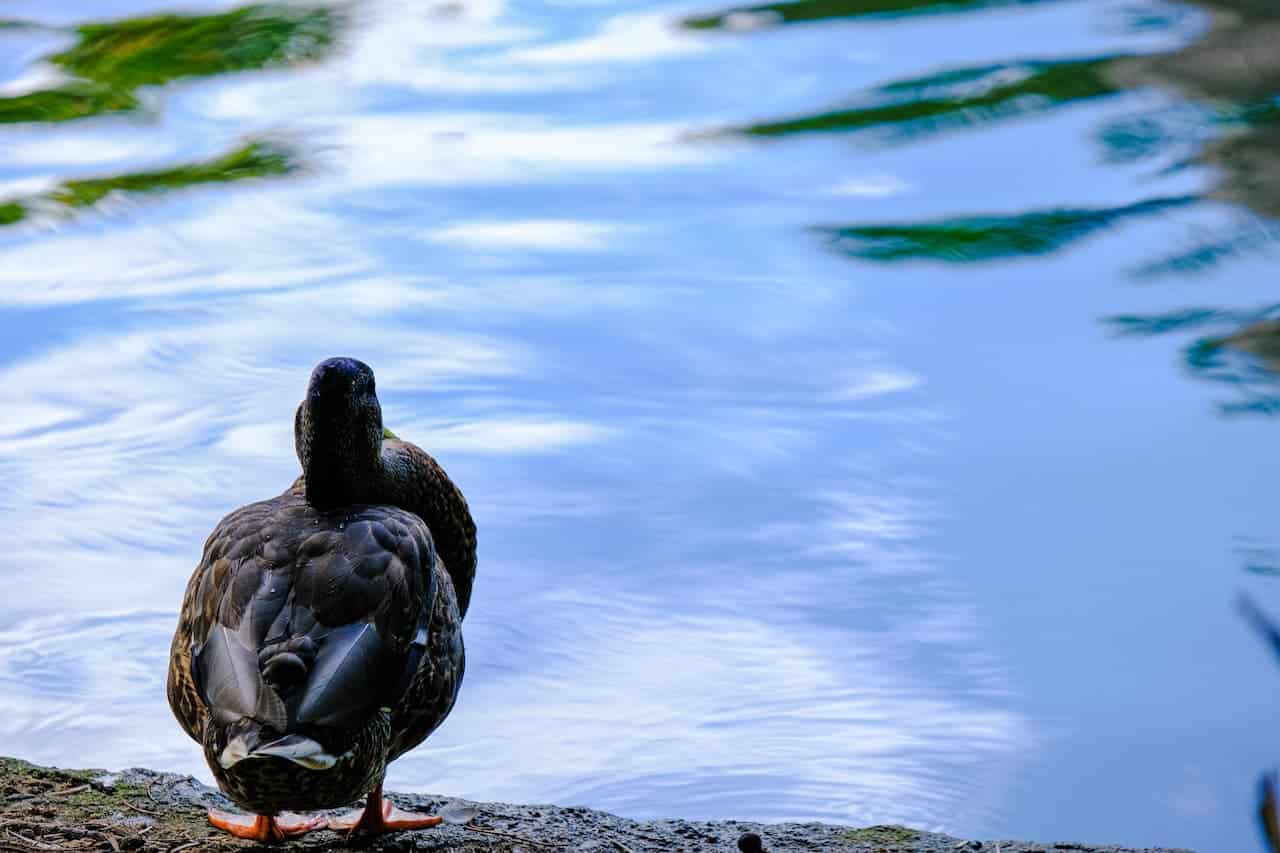Wood Ducks / Puddle Ducks
The Wood Ducks or Carolina Duck (Aix sponsa) is a medium-sized perching duck.
It shares its genus with the Asian Mandarin Duck.
Description
A typical adult is about 48 cm (19 in) in length with an average wingspan of 73 cm (29 in). This is about three-quarters of the length of an adult Mallard.
The adult male has distinctive multi-colored iridescent plumage and red eyes.
The female, less colorful, has a white eye-ring and a whitish throat.
Both adults have crested heads. When swimming, wood ducks bob their head back and forth in a jerking motion, which makes them easy to spot.
Their personality is shy and skittish.
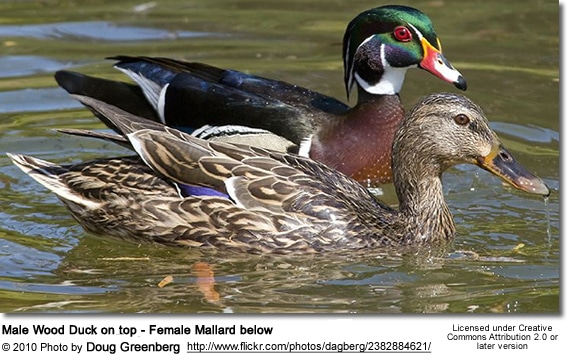

Distribution / Range
The birds are year-round residents in East Texas and other southern parts of their range, but the northern populations migrate south for the winter.
They overwinter in the southern United States near the Atlantic coast.
They are also popular, due to their attractive plumage, in waterfowl collections and as such are frequently recorded in Great Britain as escapes – populations have become temporarily established in Surrey in the past but are not considered to be self-sustaining in the fashion of the closely related Mandarin Duck.
Given its native distribution the species is also a potential natural vagrant to Western Europe and there have been records in areas such as Cornwall and the Isles of Scilly which some observers consider may relate to wild birds; however, given the Wood Duck’s popularity in captivity it would be extremely difficult to prove their provenance one way or another.
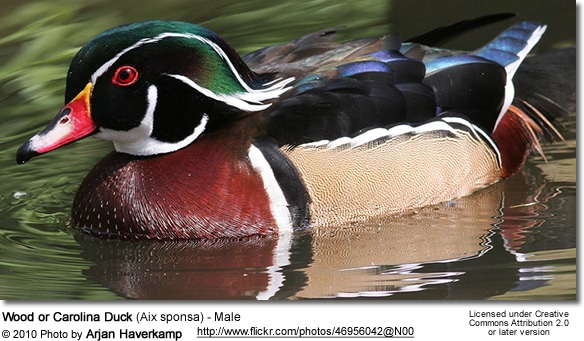

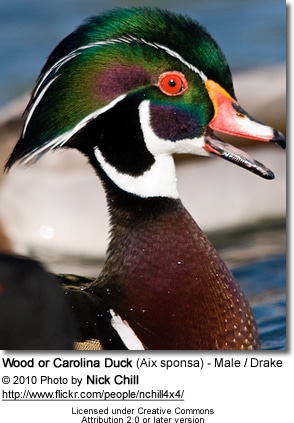
Habitat
Their breeding habitat is wooded swamps, shallow lakes, marshes or ponds in eastern North America, the west coast of the United States and western Mexico.
They usually nest in cavities in trees close to water, although they will take advantage of nesting boxes in wetland locations if available.
The wood duck tends to fly for prolonged periods of time after reproducing.
Breeding / Nesting
Females typically lay between 9 and 14 eggs. However, if nesting boxes are placed too close together, females may lay eggs in the nests of their neighbors, which may lead to nests which may contain as many as 40 eggs and unsuccessful incubation, a behavior known as “nest dumping”.
They prefer nesting over water so the young have a soft landing, but will nest up to 150 yards (140 m) away from the shoreline. The day after they hatch, the young climb to the nest entrance and jump to the ground. The ducklings can swim and find their own food by this time.
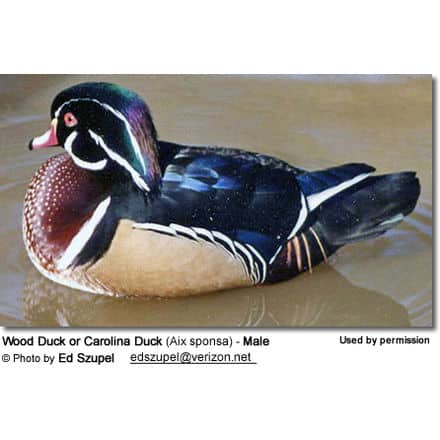
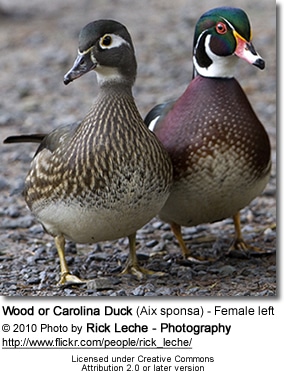
Diet / Feeding
These birds feed by dabbling or walking on land. They mainly eat berries and seeds, but also insects, making them omnivores.
Status / Conservation
The population of the Wood Duck was in serious decline at the beginning of the 20th century as a result of severe habitat loss and market hunting both for meat and plumage for the ladies’ hat market in Europe. Banning market hunting and establishment of game laws to regulate sports hunting along with conservation efforts including widespread construction of nesting boxes in suitable habitat resulted in this species’ return to sustainable numbers.
Landowners as well as park and refuge managers can encourage Wood Ducks by building Wood Duck nest boxes near lakes, ponds, and streams. Fulda, Minnesota has adopted the wood duck as an unofficial mascot, and a large number of nest boxes can be found in the area. In May 2009, the wood duck was recognized as the official state duck of South Carolina.
The population of the wood duck has increased a great deal in the last several years. The increase has been due to the work of many people constructing wood duck boxes and conserving vital habitat for the wood ducks to breed. During the open waterfowl season, U.S. hunters have only been allowed to take two wood ducks per day in the Atlantic and Mississippi Flyways. However, for the 2008-2009 season, the limit was raised to three. The wood duck limit remains at two in the Central Flyway and at seven in the Pacific Flyway.

Calls / Vocalizations
The male’s call is a rising whistle; the female gives a whistled whoo-eek if startled.
References
- BirdLife International (2009). “Aix sponsa.” 2009.2 IUCN Red List of Threatened Species. IUCN 2009.2.
- Wermers, Jason. “Right whale, dolphin gain state recognition” “The Item, 2009-06-04. Retrieved on June 4, 2009.

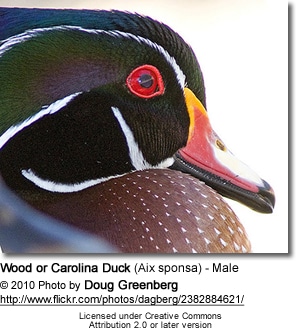
Relevant Resources
Sub-species:
Diet / Feeding:
Wood ducks feed by dabbling or walking on land. They mainly eat plants and seeds.
Ducks generally feed on larvae and pupae usually found under rocks, aquatic animals, plant material, seeds, small fish, snails and crabs.




